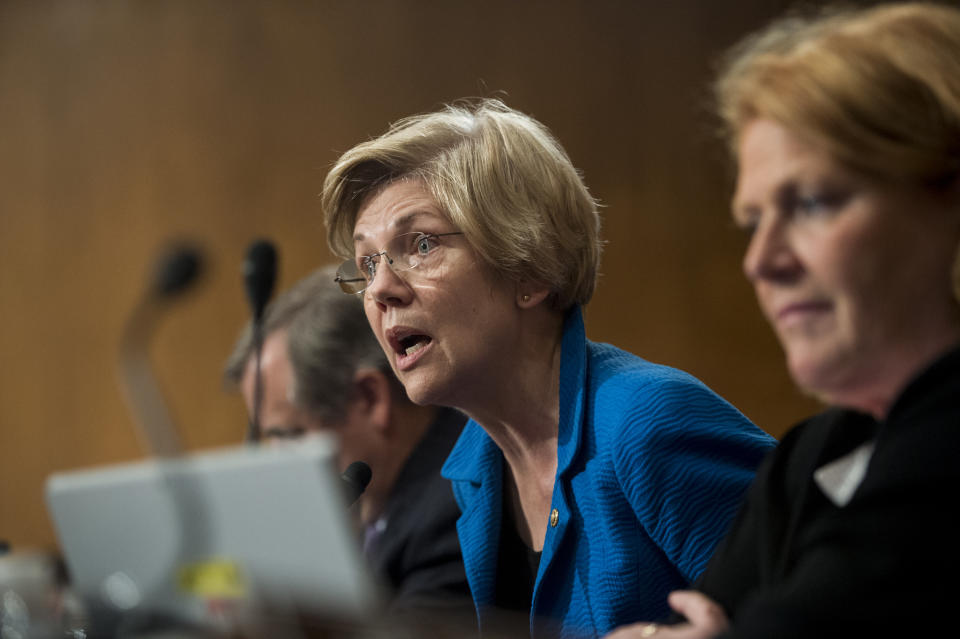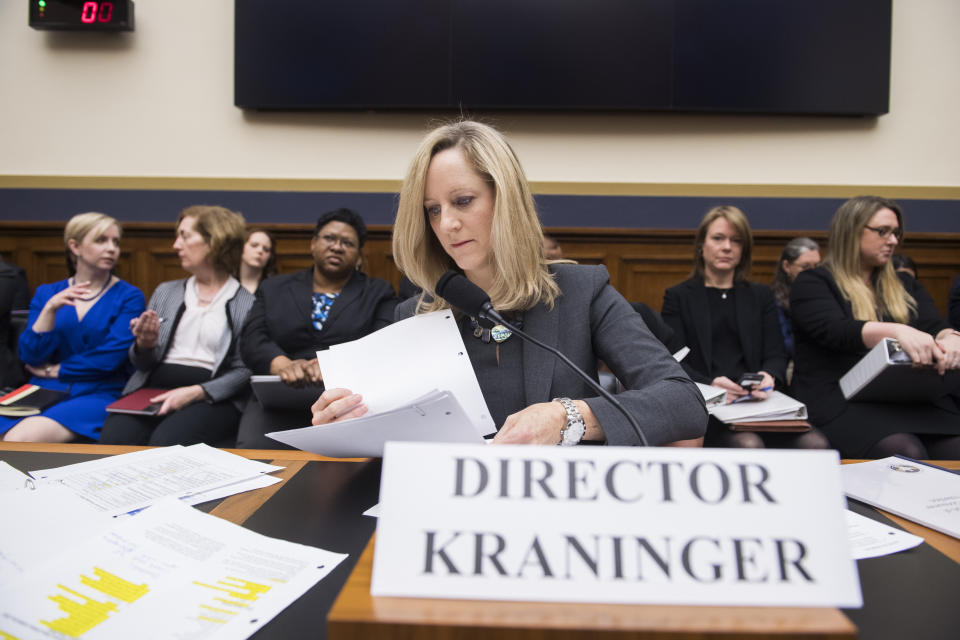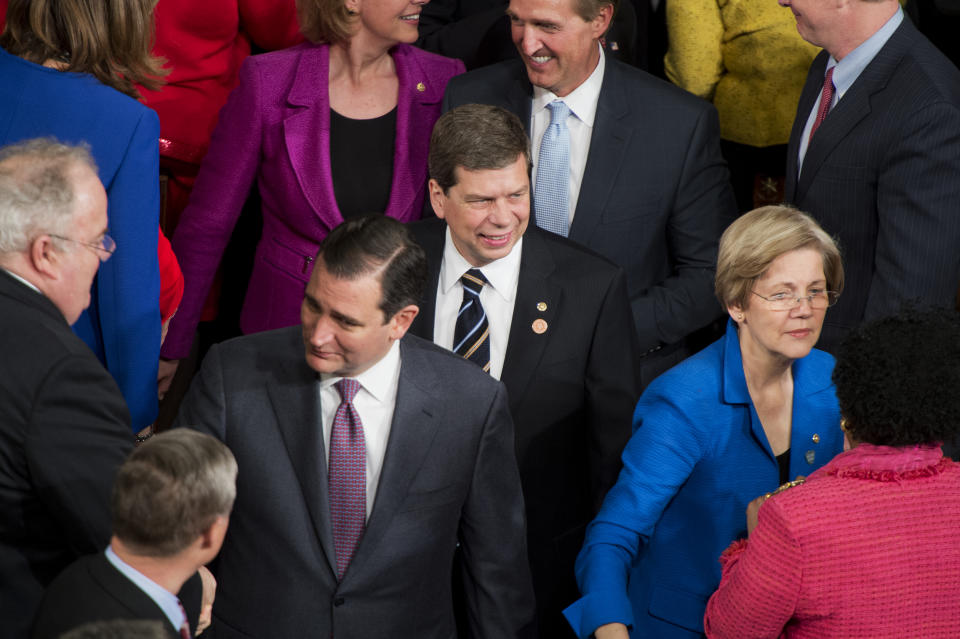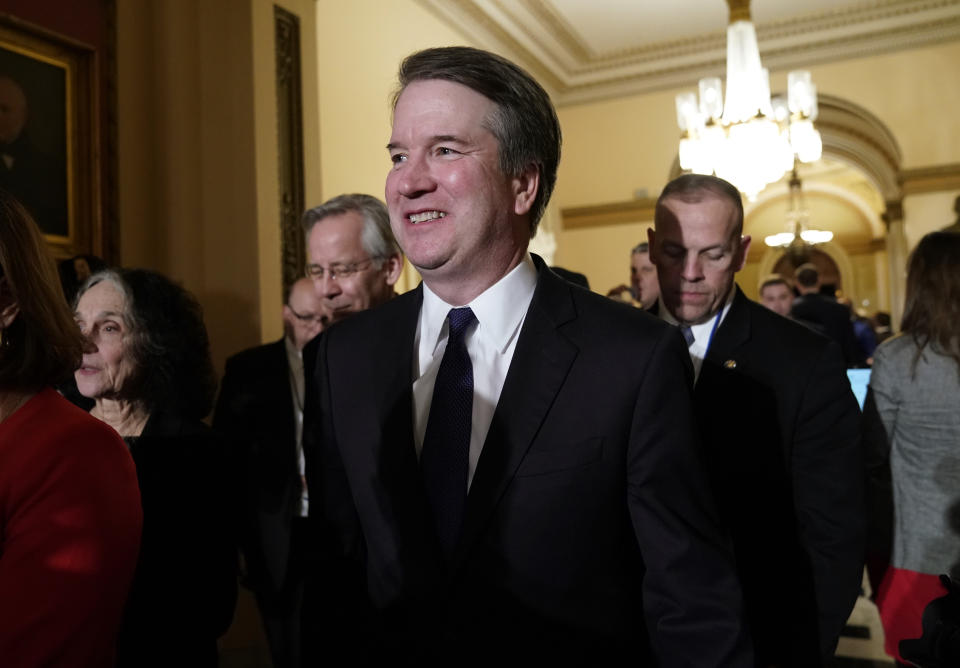Is the Consumer Financial Protection Bureau's structure constitutional? The U.S. Supreme Court will decide
The Consumer Financial Protection Bureau (CFPB) — a brainchild of Massachusetts Senator Elizabeth Warren after the Financial Crisis — will be in front of the U.S. Supreme Court over whether its leadership structure is constitutional.
The crux of the case is that there is only one, not multiple directors, leading the agency, and that that person can only be removed for cause. In other words, the president of the United States can only remove the director of the CFPB with a very strong justification.
The Trump administration is set to argue to the U.S. Supreme Court on March 3 that the Constitution gives the president power to fire the CFPB director at his or her own discretion. A ruling is expected by the end of June.
Legal experts think there’s a strong chance that the Trump administration will achieves its aims in the case.
Leah Litman, an assistant professor of law at the University of Michigan who is an expert on constitutional law, told Yahoo Finance that given the “direction of the court’s cases, it is extremely likely that the court is going to say the for-cause removal restriction is unconstitutional."
Christopher Peterson, a professor of law at the University of Utah and previously at the CFPB from 2012 to 2016, told Yahoo Finance that there’s a "significant chance" that the court could get a five-justice majority in declaring the for-cause provision unconstitutional.

‘An agency that's has really done a lot of good’
Under Title X of the Dodd-Frank Act of 2010, which was proposed by then-Professor Elizabeth Warren, the CFPB was created as an independent agency within the Federal Reserve system. It was designed to “regulate the offering and provision of consumer financial products or services under the Federal consumer financial laws.”
The agency was given the power to “administer, enforce… implement federal consumer laws,” and it can even engage in investigations, issue subpoenas, conduct hearings, and so on.
“This is an agency that's has really done a lot of good,” Adam Levitin, a professor at Georgetown University Law Center, told Yahoo Finance. “It's returned $12 billion to defrauded consumers in far less than a decade.”
The CFPB had previously defended itself as constitutional. But the agency has shifted its position under current director Kathy Kraninger, agreeing that its leadership structure is unconstitutional.

“I was a little surprised that she came forward and decided to take the position publicly that the for-cause removal clause is unconstitutional,” Peterson said. “Because she didn't say that in the confirmation hearings... So that was a little bit surprising to me.”
The financial industry, which is “pushing for these changes,” believes that a “multi-member commission would be less forceful, less active, less effective than a single director,” former CFPB Director Rich Cordray said at a talk at the University of Pennsylvania Law School. “Notably, Senator Warren, who originally had been somewhat indifferent before she was thinking much about it, about a single director or multi-member Commission has come to be an absolute advocate of the single Director model.”
Cordray added that Warren “does not want to see a multi-member commission because she believes that a multi-member commission invariably would sag toward a sort of mediocre status quo and not be very active and not be very aggressive.”
Contrary to Warren, Republican lawmakers introduced efforts to eliminate the CFPB altogether, with Texas Senator Ted Cruz stating in May 2019: “There has never been a greater farce and waste of government resources than the Consumer Financial Protection Bureau, and now is the time to eliminate it.”

The Kavanaugh factor
The current case was brought forward by a California-based debt relief firm called Selia Law. The CFPB had begun an investigation into the firm previously, asking the company to provide information and documents.
The company objected, arguing that the CFPB was “unconstitutionally structured.” The CFPB disagreed and successfully petitioned a federal district court for enforcement. The Supreme Court granted the petition to hear the case on Oct. 18.
Brett Kavanaugh, the newest justice on the bench, has already made his views on the CFPB clear. In a 2016 opinion delivered as a judge in the D.C. circuit of the U.S. Court of Appeals, Kavanaugh bashed the idea of independent agencies headed by a single director and took specific issue with the CFPB.
"Never before has an independent agency exercising substantial executive authority been headed by just one person," Kavanaugh wrote.
Kavanaugh did not suggest folding the agency entirely, instead recommending that the president be allowed to fire the CFPB director at will. And Litman predicted that the Supreme Court debate will likely focus on the “for cause” provision as opposed to the existence of the agency.

Consequently, the case would hinge on justices’ interpretation of the separation of powers among the three branches of government as detailed in the Constitution. Article I sets up the legislative branch, which oversees the CFPB. Article II sets up the executive branch, which is led by the president.
On Feb. 14, the Trump administration’s solicitor general filed a brief arguing that the CFPB should in fact remain intact, but that its structure should be reformed to make the agency’s director fireable at will and to sever the agency from the rest of Dodd Frank.
“Under existing law, and the better interpretation of Article I and Article II, the CFPB is constitutional,” Litman argued, referring to the separation of powers between the Executive and Legislative branch. “The Supreme Court has previously said that the Constitution allows Congress to create so-called independent agencies — that is agencies, led by [leaders who are] only removable for cause by the president. It just so happens that those agencies were headed by multi-member commissions, rather than individual directors. But there's no reason why that matters for purposes of Article I and Article II.”
She added that if Congress could “insulate a bunch of people from presidential removal, it can insulate any one of those people who might be in the same position,” i.e. leading an agency.
On the other hand, federal courts have expressed concern with the separation of powers regarding an executive agency’s single director only being removable for cause. The issue hence boils down to how the Supreme Court sees the CFPB: as purely executive or quasi-executive.
Levitin, who co-authored an amicus brief on the case with fellow Georgetown law professors in support of the CFPB, said that the Supreme Court’s decision could be close.
“Four justices won't care, because I think there's clearly four votes for killing off the CFPB,” he told Yahoo Finance. “I think the real question is where [Chief Justice John] Roberts wants to come out. And part of the issue might be how radical the other four want to be.”

History repeating itself?
The case isn’t without precedent.
Litman noted that in the 2010 case of Free Enterprise Fund v. Public Company Accounting Oversight Board (PCAOB), which was decided by the Supreme Court, the for-cause removal issue also came up.
The PCAOB, which was a regulatory agency that was under the control of the Securities and Exchange Commission (SEC), had members that were only removable for cause by the SEC itself. The SEC’s members, in turn, were also only removable for cause. Since the PCAOB five members were appointed by the SEC, the PCAOB was mostly independent of presidential control.
“So there was one layer of for-cause removal between the President and the agency head,” Litman explained, “and then another layer for cause removal restriction between the agency head and the PCAOB head.”
The Supreme Court ruled in 2010 that such an arrangement, with respect to the removal provision, was unconstitutional.
Consequently, the court allowed the PCAOB to continue to function, but the members of its boards were to be made removable at-will rather than for cause.

‘This constitutional question is a stalking horse’
The decision could have serious consequences, Litman warned.
The Supreme Court’s move could potentially limit Congress in the future to “rely on… politically insulated administrative agencies to carry out regulations,” as well as demonstrate that the court’s “skepticism of administrative agencies,” and eventually trigger a domino effect where it results in a bigger “attack on the administrative state and administrative agencies.”
“In the very long run, it's probably not a good thing,” Levitin added. “It's really ... about the ability of financial institutions lobbying to affect the agency. … if you're a large bank … and there's at will removal, you make sure you give a lot of money to the President's election campaign and you build up... the influence of the White House. And that lets you then have influence of agency.”
Peterson argued that the case is ultimately a distraction.
“My core perspective is that this constitutional issue, on whether or not the president can remove or not remove, is something of a sideshow the core mission that most Americans care about — which is whether or not they're getting fair, transparent, honest financial services that work for them,” Peterson said. “And that's what the primary focus should be on for the agency.”
He continued: “I suspect that for many people, this constitutional question is a stalking horse that is being used as cover for advancing a deregulatory agenda. It's an opportunity to score some political points, under the brand of our collective faith and our Constitution, instead of the public anger at payday lenders, debt collectors and other financial institutions who have too often engaged in deceptive practices.”
— Alexis Keenan and Brian Cheung contributed to this article.
Aarthi is a writer for Yahoo Finance. Follow her on Twitter @aarthiswami.
Read more:
Elizabeth Warren torches consumer protection head for not protecting consumers
Internal memo highlights Navient's alleged hidden agenda with student loan borrowers
Read the latest financial and business news from Yahoo Finance
Follow Yahoo Finance on Twitter, Facebook, Instagram, Flipboard, SmartNews, LinkedIn, YouTube, and reddit.

 Yahoo Finance
Yahoo Finance 
